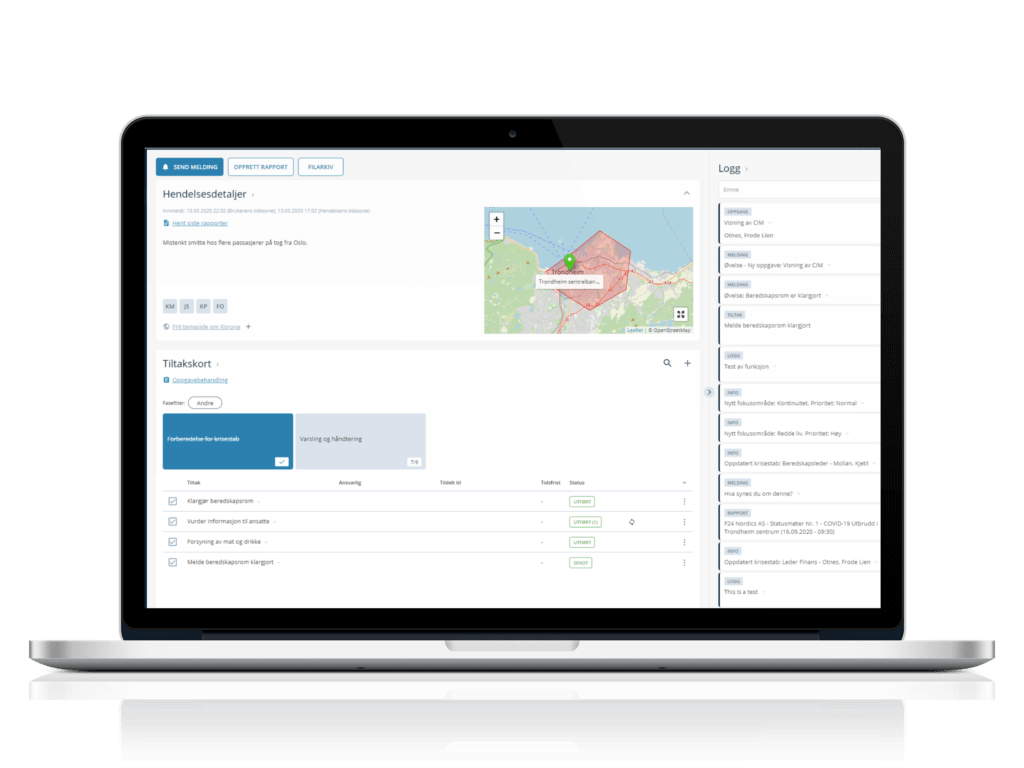Crisis Communication during Distress
Crisis communication is an integral part of crisis management. Well managed communication during and after a crisis ensures protection of people, assets and reputation.


Managing Crisis Communication
During a crisis, the normal channels of communication, such as mobile networks often become overloaded. Having a back-up service that is resilient is vital to ensure efficient, speedy communication for all your stakeholders and partners.
Read More about Media and Crisis Communication
Learn How Our Smart Solutions can Help You!
Fill in you personal Data
Essentials of Crisis Communication
Crisis communication solutions should include a dedicated app or specialist crisis communication software, particularly if they incorporate multiple options such as internet-based information, text messaging and voice calls, to circumvent any disruption to normal communication channels.


Deploying Crisis Communications
Crisis communication plans need to be activated as soon as the situation occurs. The ‘golden hour’ of the first sixty minutes of a crisis has been long superceded by the ‘golden five minutes’. Act when it’s needed the most.
Download your Whitepaper now!
Fill in you personal Data
Proactive Crisis Management: From Prevention to Lessons Learned
FACT24 CIM is our Software-as-a-Service-solution for comprehensive, digital crisis management – including digital task management, management report preparation and management of external stakeholders. Get to know FACT24 CIM in depth and schedule a demo:

Related Solutions

Product Finder
Find solutions that can suit your needs in case of emergency.

F24 SaaS-Solutions
Check out our range of smart solutions.

Emergency Notification
Explore how your organisation benefits from automated emergency notification.

Reap the Benefits of a Crisis Communication System
F24’s products help communications teams produce collaborative, consistent communication during critical situations. Our software supports organisations to respond to situations using all communication channels in real-time and includes, for example, PR integration. Talk to us today about a free demonstration of our range of crisis response solutions.
Learn How Our Smart Solutions can Help You!
Fill in you personal Data
Crisis Communications: Getting the Message Right When It Matters
When a crisis occurs, it is important that your messaging strategy and crisis communications are as clear and concise as possible. This not only conveys an image of being “in control” of the situation, but timely messaging can also help with incident response and better management of critical situations. In the long run, organisations can protect their corporate reputation by proactively dealing with emergencies and a comprehensive crisis communication plan plays a major role in successful outcomes.
Communicating during a Crisis:
Security and Liability
You don’t want your crisis communication tool to fail just when you need it most. Using specialist software ensures availability and service level agreements that meet the demands of your organisation. During a crisis, it is vital that teams can communicate in a dedicated, safe environment with high data protection and security standards.
Management and Co-Operation
When it comes to crisis communications, structure and consistency are key. A well planned, well-tested plan means responders can manage individual tasks and activities efficiently and effectively. The plan can also cover templates and pre-approved responses to have a consistent, clear message to those affected, media and stakeholders. The ability to assign tasks to members of the crisis response team ensures that the plan is put into action quickly and progress/co-operation can be checked and monitored.
Save the Day with an Effective Communication Plan
In today’s world of instant social media backlashes, intensive media scrutiny and heightened public campaigning, corporations need to deal with crisis situations quickly and effectively. F24 supports organisations to implement, manage and co-ordinate key tasks during a crisis in a professional, co-ordinated manner.